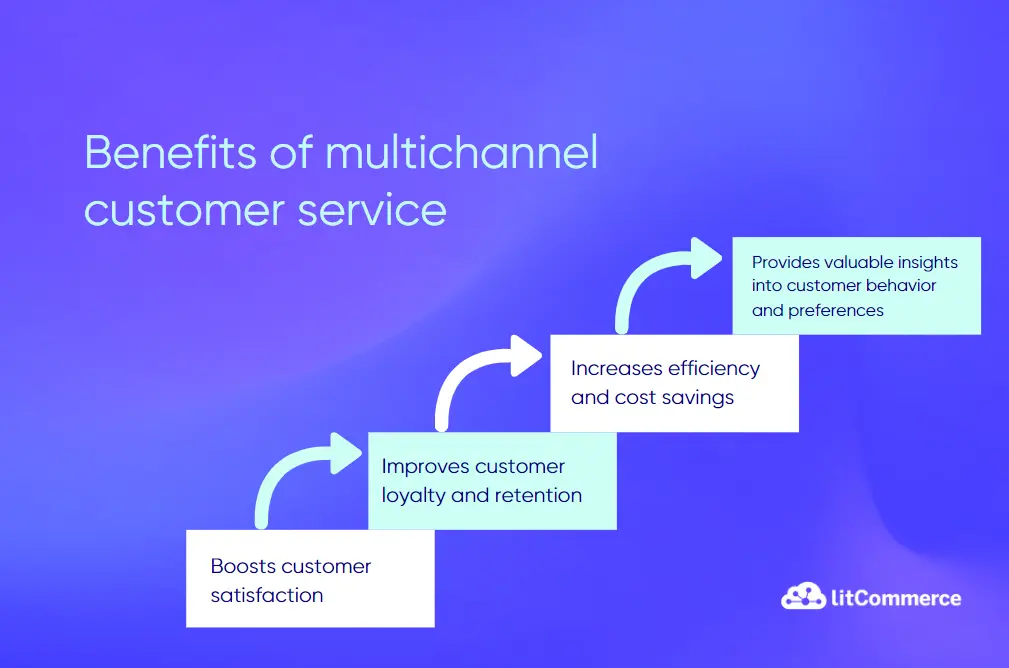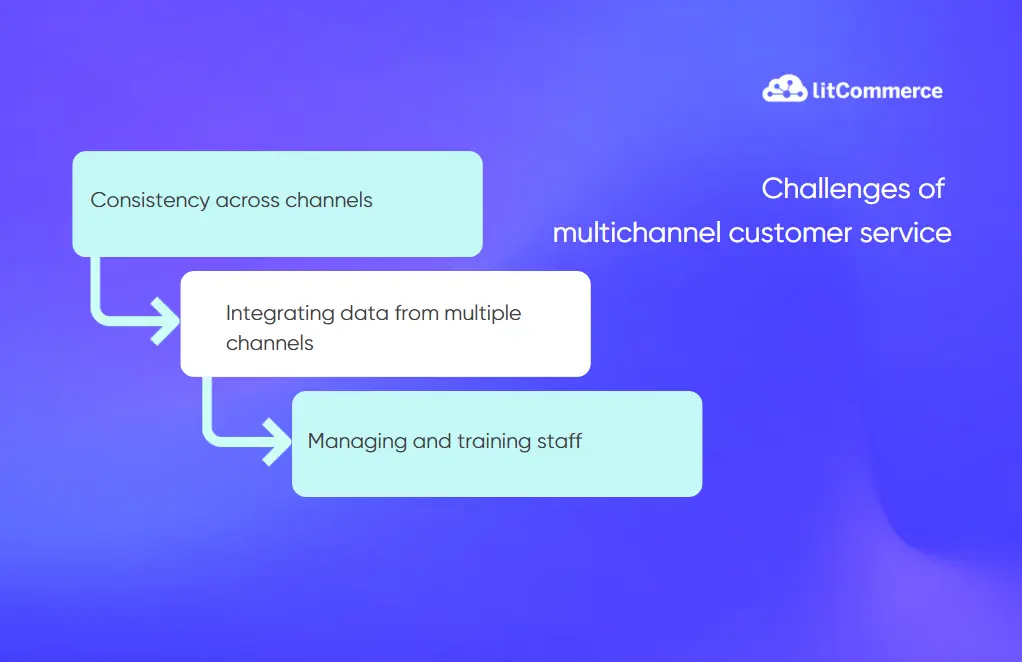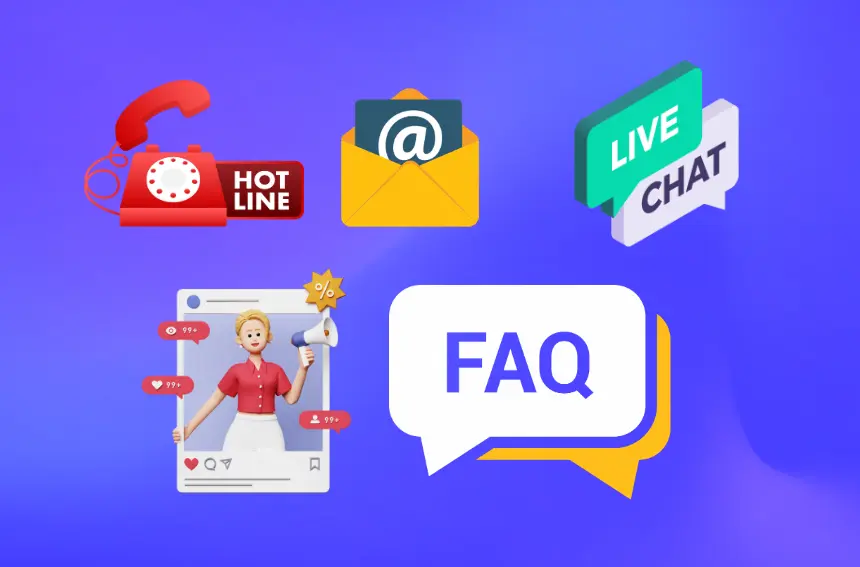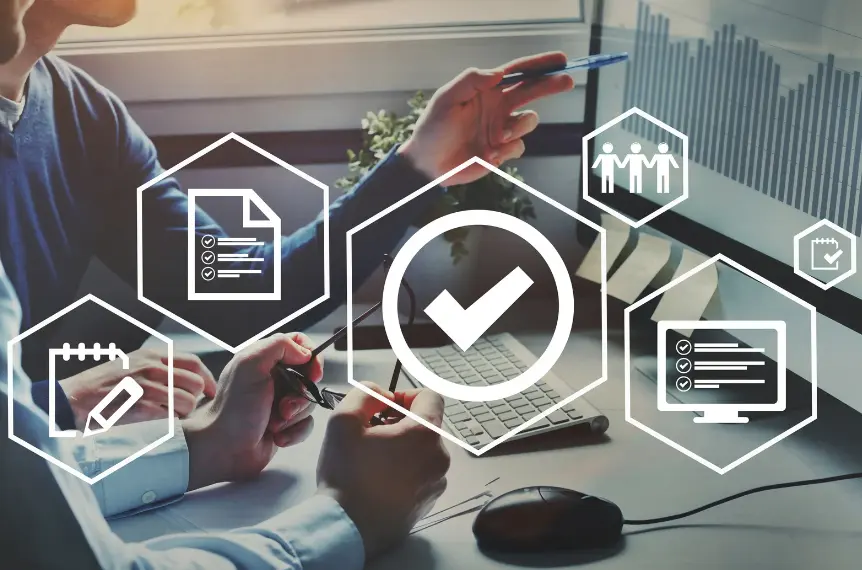Now, customers expect seamless support across all their preferred channels. That’s where multichannel customer service comes in. It’s about more than just being present—it’s about providing a consistent, personalized experience that leaves customers feeling heard and valued.
Ready to turn customer frustration into loyalty? In this comprehensive guide, we’ll unravel the secrets of multichannel customer service. From understanding its core principles to mastering implementation, we’ll equip you with the knowledge to build a customer support strategy that truly delivers.
But first, let’s set the stage with key takeaways to give you the big picture.
- Centralized management is key: Utilize a unified platform to manage interactions across all channels.
- Focus on quality over quantity: Offer support only on the channels you can handle well.
- Review interactions regularly: Analyze chat logs, emails, and call recordings to identify improvement areas.
- Cross-train your team: Rotate agents across channels to enhance their skills and ensure coverage.
- Leverage AI and automation: Utilize these tools to improve support speed and handle routine inquiries.
- Prioritize the overall customer experience: Go beyond issue resolution to create a positive and personalized experience.
What is Multichannel Customer Service?
Multichannel customer service allows businesses to support customers through various channels like phone, email, live chat, social media, and messaging apps. The purpose is to meet customers wherever they are, making it easier for them to reach out and get help however they prefer.

A prime example of multichannel customer support is Amazon. Customers can reach out to Amazon’s customer service through various channels (which is called multichannel distribution) like phone, email, or live chat on their website or app.
Furthermore, they provide self-service options such as a comprehensive FAQ section and a community forum where customers can find answers or help each other. This multichannel approach allows Amazon to cater to diverse customer preferences and ensure prompt and practical support, regardless of the chosen channel.
You might want to learn more about how to drive your target audience from everywhere to know you and purchase your product from you with our detailed Multichannel Selling Guide!
Benefits & Challenges of Multichannel Customer Support
1. Benefits of multichannel customer service
Multichannel customer service offers four major benefits that significantly enhance customer satisfaction and business performance.

First, multichannel customer service boosts customer satisfaction significantly. Studies reveal that 73% of consumers prefer companies that offer multiple channels for support, allowing them to interact on their preferred platforms. This accessibility translates to happier customers and a greater likelihood of repeat business.
Moreover, it improves customer loyalty and retention. Customers who interact with a brand through their preferred channels and get quick resolutions are likelier to stay loyal. HubSpot reports that 93% of customers are tending to make repeat purchases with companies that offer excellent customer service.
Multichannel service also increases efficiency and cost savings. Businesses may handle more inquiries by leveraging self-service options like online FAQs or chatbots alongside traditional channels without significantly increasing staffing costs.
Finally, the strategy provides valuable insights into customer behavior and preferences. Tracking interactions across different channels enables businesses to understand their customers better, personalize experiences, and identify areas for improvement.
2. Challenges of multichannel customer service
Multichannel customer service, while highly beneficial, also presents several significant challenges.

Consistency across channels is a major hurdle. Maintaining the same level of service quality and ensuring that customer information is accurately shared across all platforms can be difficult. A study by Forrester found that 55% of consumers believe companies need more consistency in service across channels. This consistency can lead to frustration and a cohesive customer experience.
Furthermore, integrating data from multiple channels can be complex. Providing personalized and seamless service is challenging without a unified view of customer interactions. Research shows that only 14% of businesses have achieved a 360-degree view of their customer data.
Finally, managing and training staff to handle inquiries across diverse channels demands resources and ongoing investment. Agents must be knowledgeable and adapt their communication style to each platform, which requires dedicated training and support.
Channels for Customer Service
As a seller, you should provide many avenues for customers to find assistance and engage with your brand. Let’s explore some key channels that you can make use of:
- Hotline: The traditional channel remains crucial, especially for complex issues requiring direct interaction with a representative. Despite the rise of digital channels, The majority, 81%, of service professionals choose the phone as their go-to channel for complex matters.
- Email: It is ideal for non-urgent inquiries or detailed explanations, email offers customers the convenience of documenting their issues and receiving thoughtful responses. It’s also a great way to provide follow-up information or track conversations.
- Live Chat: This real-time chat feature on your website or app offers immediate assistance to customers who prefer text-based communication. It’s perfect for answering quick questions, troubleshooting simple issues, and guiding customers through their online journey. According to Econsultancy, 73% of customers report high satisfaction rates when using live chat compared to other channels.
- Social media: With billions of people active on platforms like Facebook, X, or Instagram, social media is a powerful customer service tool. It allows merchants to interact with customers in a public forum, quickly addressing concerns and demonstrating responsiveness. A survey by Sprout Social found that 79% of customers expect a response within 24 hours when they reach out on social media.
- Self-service tools: Tools like FAQs, knowledge bases, and community forums empower customers to find solutions independently, reducing the need for direct contact. A report stated that 67% of customers prefer self-service over speaking to a company representative. These tools improve customer satisfaction and help reduce the workload on support teams.

6 Best Practices to Provide Excellent Multichannel Support
Delivering excellent multichannel customer service requires more than just being present on multiple platforms—it demands strategic execution. Here are six actionable practices that can help you optimize your support and thrive in the multichannel eCommerce game:
1. Manage everything from one channel
To effectively manage multichannel customer service, it is vital to centralize all customer interactions on a single platform. When businesses handle inquiries from different channels—such as email, social media, live chat, and phone—within one system, they allow for more organized and efficient workflows.
To begin, you should select a unified platform that integrates all communication channels. Options like Zendesk, Freshdesk, or HubSpot are widely used and reliable. After selecting the platform, starting with the channels most frequently used by your customers is important. Businesses should ensure that the system operates smoothly before integrating additional platforms.
Moreover, it is essential to provide comprehensive training to your team so they can efficiently navigate the new system, manage tickets, and maintain effective communication across all channels. Finally, regular monitoring of the platform’s performance is necessary to make adjustments and keep operations running smoothly.
2. Offer only the channels you can handle well
When offering multichannel customer communication, it is not necessary to support every possible channel. Instead, businesses should focus on the channels they can manage effectively. Spreading resources too thin can lead to lower service quality.
To implement this strategy, you should assess customer preferences first. Surveys or analysis of customer interaction data can help determine which channels your customers most prefer.
Next, businesses must evaluate their team’s capabilities and available resources to ensure they can maintain high-quality service on the selected platforms. After this assessment, it is advisable to prioritize the top 2-3 channels that align with your customers’ needs and your team’s strengths.
Once these channels are optimized, businesses may consider expanding to other platforms, but only if they are confident in maintaining the same service standards.
3. Review chat logs, emails & call recordings
Regularly reviewing customer interactions, such as chat logs, emails, and call recordings, is crucial for maintaining and improving multichannel support. This practice helps businesses identify areas for improvement and ensures consistency in service quality.
Businesses should establish a regular schedule for reviewing these interactions to implement this review process effectively. This schedule could be weekly, bi-weekly, or monthly, depending on the volume of inquiries. Additionally, it is important to develop specific criteria for evaluating successful interactions. These criteria should focus on aspects such as response time, tone, accuracy of information, and customer satisfaction.
After each review, it would be better to provide constructive feedback to their team members, highlighting strengths and improvement areas. Furthermore, incorporating insights from these reviews into ongoing training sessions can help team members understand best practices and avoid common pitfalls.

4. Rotate your team across channels
Rotating team members across different support channels is a useful way to ensure that they are versatile and capable of delivering excellent multichannel customer service on various platforms.
To implement this practice, businesses should first create a rotation schedule that allows team members to experience different channels regularly. For example, one week could be assigned to live chat, another to email, and the next to social media.
Before rotating team members, it is crucial to provide channel-specific training to familiarize them with the tools and types of inquiries they will encounter on each platform. After rotation, you should monitor team performance across the channels and use this data to identify strengths and areas where additional training might be necessary.
Additionally, it is beneficial to encourage knowledge sharing among team members to foster a collaborative environment where everyone can learn from each other’s experiences.
5. Use AI & automation to improve support speed
Incorporating AI and automation into multichannel customer service strategies can significantly enhance efficiency and reduce response times. Automation is particularly useful for handling routine inquiries, allowing human agents to focus on more complex issues.
To begin, you need to identify repetitive tasks that can be automated. These tasks could include order status inquiries or password resets. Once identified, businesses can implement AI-powered tools like chatbots, automated email responses, or virtual assistants to manage these tasks. Tools such as Intercom, Drift, or ManyChat are effective options.
It is also important to ensure seamless integration of these tools with existing customer service platforms to allow for smooth handoffs between automated systems and human agents when necessary. Additionally, businesses should regularly review the performance of AI and automation tools and update them as needed to maintain their effectiveness.

6. Look beyond customer services
Providing excellent multichannel customer service goes beyond just resolving issues; it involves creating a holistic customer experience that enhances satisfaction and loyalty. Proactively addressing customer needs and personalizing interactions can significantly improve the overall customer experience.
To achieve this, we advise you to train their teams to anticipate customer needs. For example, if a customer frequently contacts support about a specific issue, the team could offer a more permanent solution or additional resources. Additionally, businesses should implement a follow-up process for resolved issues. This could include sending a quick email or feedback survey to ensure customer satisfaction.
Furthermore, personalized customer interactions by using customer data to address customers by name, refer to previous interactions, and tailor support to their specific needs can greatly enhance the customer experience.
Finally, it is important to regularly seek customer feedback about their experience with your support channels and use this feedback to make continuous improvements.
Differences Between Omnichannel vs Multichannel Customer Service
Omnichannel and multichannel customer service are both approaches to engaging with customers across various platforms, but they differ in integration and customer experience.
Multichannel customer service involves offering support through multiple independent channels, such as email, phone, social media, and chat. However, these channels are often managed separately, which can lead to fragmented customer experiences.
On the other hand, omnichannel customer service provides a unified and seamless experience across all channels. All customer interactions are connected, allowing customers to switch between channels without losing context or repeating information.
The key difference between omnichannel vs multichannel is that while multichannel focuses on offering multiple support options, omnichannel integrates these channels to provide a more cohesive and personalized experience.
Take a glance at these tables to get an intuitive view of this difference:
Aspects | Multichannel Customer Service | Omnichannel Customer Service |
Integration | • Channels are managed independently. | • Channels are fully integrated. |
Customer experience | • Fragmented may require customers to repeat information. | • Seamless; consistent experience across all channels. |
Communication | • Separate interactions across different channels. | • Unified interaction history accessible on all channels. |
Focus | • Offering multiple support options. | • Providing a cohesive and personalized experience. |
Implementation complexity | • Easier to set up but may lead to inconsistencies. | • More complex but ensures a smoother and more unified customer journey. |
Multichannel Customer Service – FAQs
Multi-channel customer engagement refers to a strategy where businesses interact with customers across various platforms, such as social media, email, phone, and in-store. The goal is to reach customers wherever they are, providing consistent communication and support across all channels, but each channel often operates independently. Multichannel customer support uses various independent channels such as phone, email, and social media to interact with customers, but each channel functions separately. Omnichannel customer support, however, integrates all these channels into a unified system, allowing for a continuous and consistent experience. This means that customer interactions are connected across platforms, enabling a more cohesive and personalized support journey. Multichannel contact management handles customer interactions across various platforms, such as email, phone, social media, and live chat, each separately. This approach ensures that businesses can address customer inquiries through multiple channels.
Conclusion
In short, to provide exceptional multichannel customer service, businesses must strategically manage and optimize their communication channels. Implementing practices like centralizing interactions, focusing on key channels, and utilizing AI can significantly improve service quality and efficiency.
For further insights and tips on enhancing your eCommerce strategies, be sure to follow the LitCommerce blog. Stay updated with our latest articles to continuously improve your customer service practices and drive success in your business.



